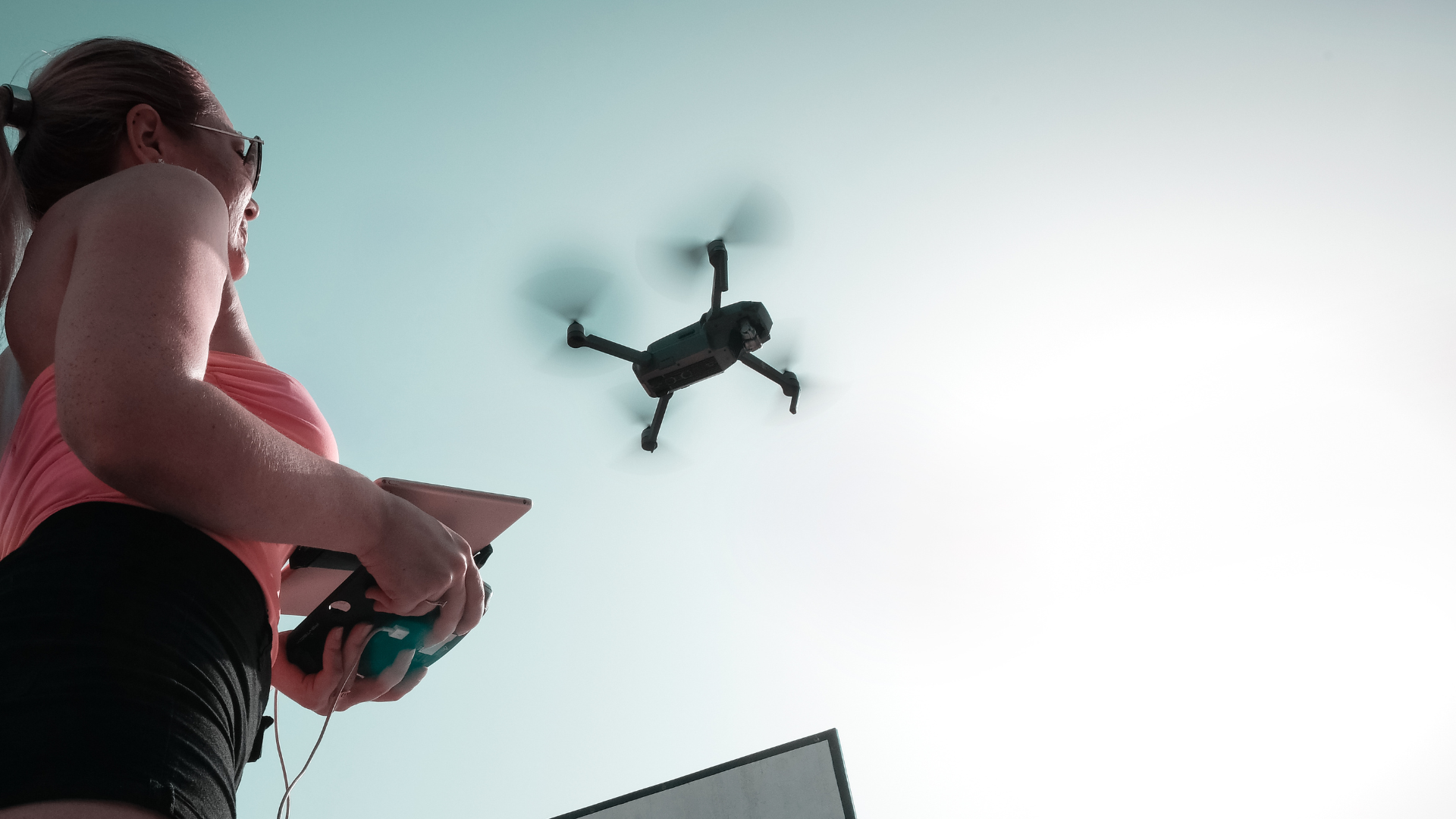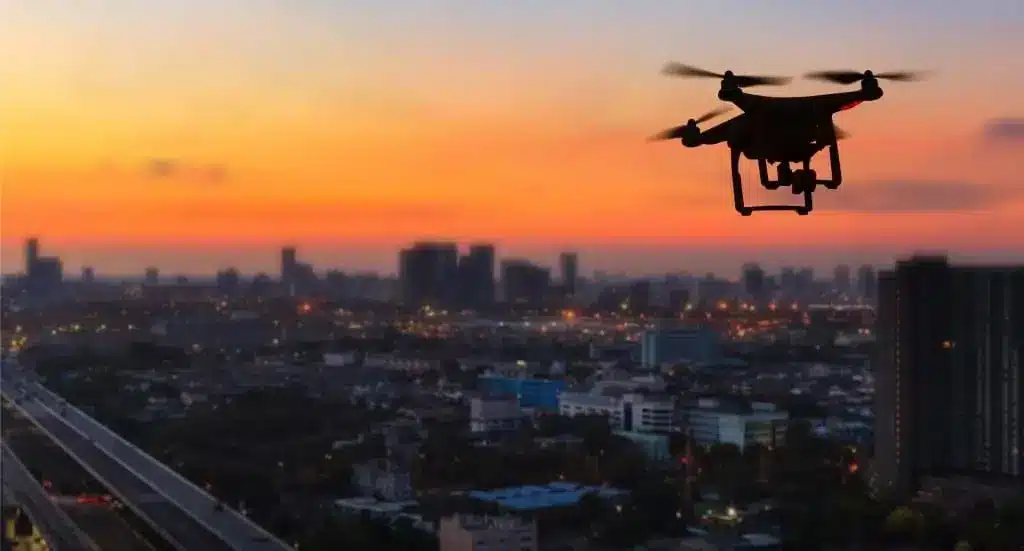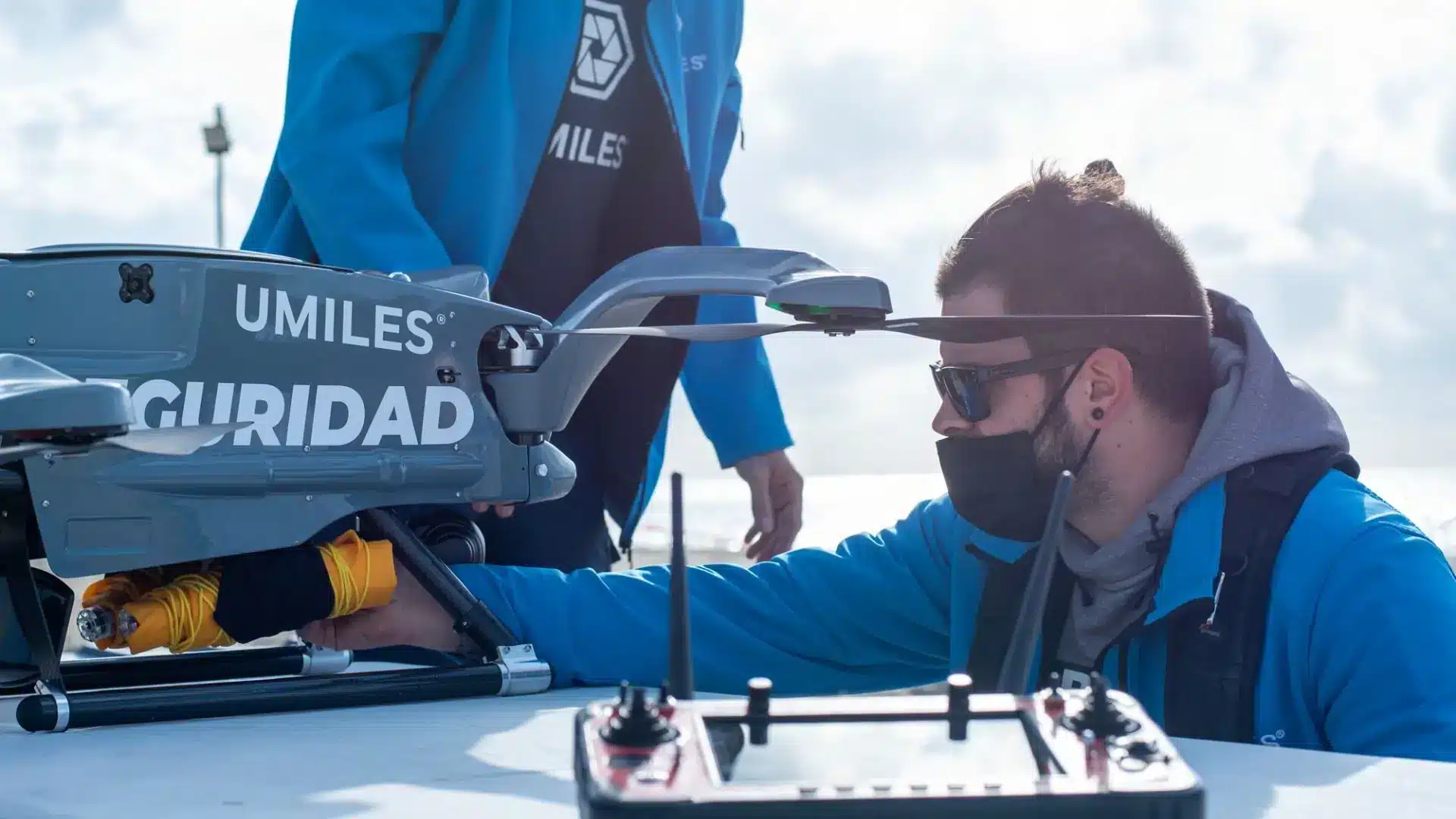The world’s fastest drone with the ability to manoeuvre without moving in a straight line has been created by the Dutch Drone Gods team. It is the “Rocket Drone” which is capable of reaching speeds of over 300 km/h.
This option is launched with the aim of revolutionising the way Formula 1 races or any other extreme speed sport on circuits are currently viewed, as this drone manoeuvrability will allow the sporting experience to be lived in a completely revolutionary way.
Join us in this article to discover the future of sports broadcasting, with the world’s fastest drone: speed and advanced technology.
The drone revolution in Formula 1
High-speed drones are revolutionising the way Formula 1 is broadcast, as they are able to follow the cars on the circuit and are equipped with 4K cameras, offering good quality and providing an exciting new perspective for fans of the sport.
Drone applications in motorsport
Drones are used to follow the cars during races, capturing high-quality images and providing real-time data. These new drone control systems will not only improve the broadcasting of the sport, but will also allow participants and teams to improve their strategies.
Faster drones in a straight line, but not on racetracks
It is important to clarify that there are some drone models that are faster in a straight line, but not on circuits. Such is the case of the XLR, which exceeds 400 km/h in a straight line. However, its flight time is short, as it can only stay in the air for a few seconds and, in addition to that, it has no control when trying to make movements outside the straight line.
This is why the model developed by Dutch Drone Gods has become the fastest drone in the world when it comes to tracking racing circuits.
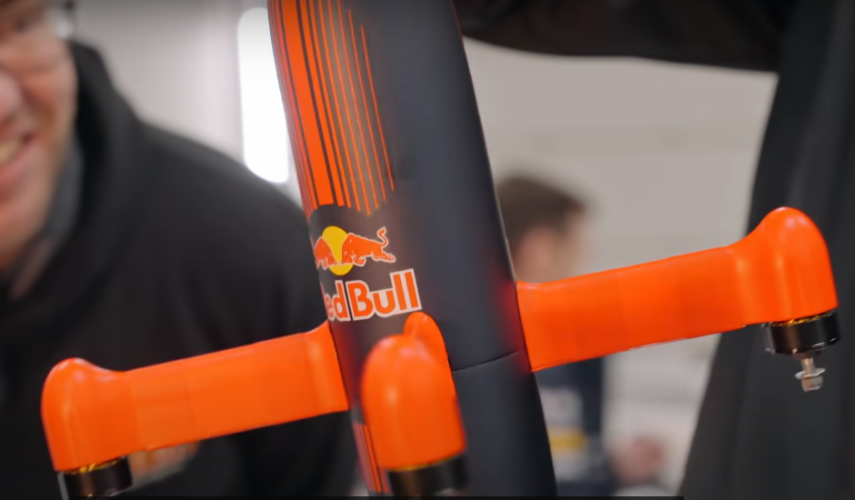
Comparison of traditional drones and new prototypes
A traditional drone usually does not have the ability to reach high speeds like those found in motor racing. Some models are capable of high speeds in a straight line, but new prototypes such as the Rocket Drone can maintain these speeds in corners, thanks to their aerodynamic designs and lightweight components. This represents a technological innovation in F1 that represents an excellent advance for the sport.
Technical challenges in circuit drone construction
Building drones capable of racing on circuits involves overcoming significant technical challenges, such as maintaining stability and control at high speeds during complex manoeuvres. This is where the Dutch Drone Gods team had to overcome many challenges.
Speed wasn’t really the biggest issue, all the focus was on mastering the corners. And although not much can be revealed about the solution that was implemented, the successful results can be seen in the tests.
The importance of agility and cornering accuracy
A drone’s ability to corner with precision and agility is important to follow the Formula 1 cars around the circuit, but experience is also needed to be able to get control of a drone at these high speeds, as manoeuvrability is just as important as top speed.
If you want to specialise in operating drones at high speeds, we recommend that you sign up for our professional FPV drone pilot course, where you can learn everything you need to become an expert in circuit racing transmissions.
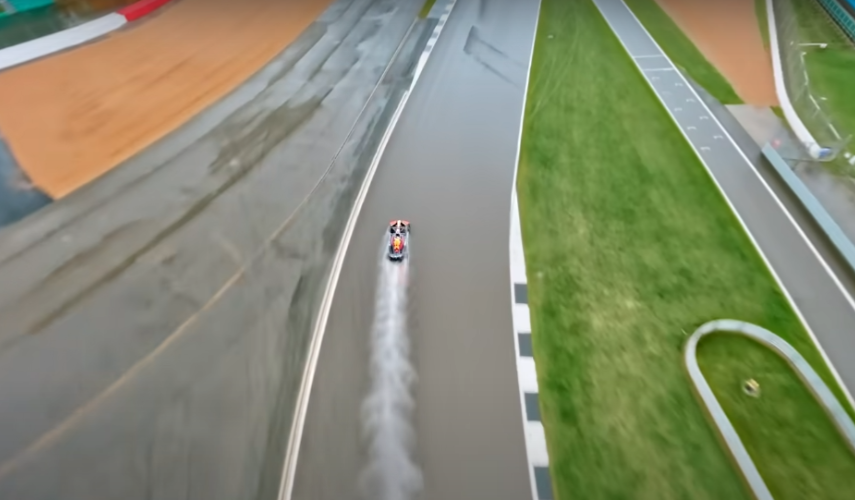
Technology and design for improved manoeuvrability
To create the world’s fastest drone, advanced materials such as carbon fibre and advanced control systems were used to improve the drone’s manoeuvrability and cornering response.
However, at the prototype’s current stage of development, it is not possible to divulge much more detail about the components of this impressive model. What is well known is that the use of advanced materials and aerodynamic design allows drones to reach and maintain high speeds, reducing wind resistance and improving efficiency.
Examples of F1 circuit tests with drones
Successful tests have been conducted on Formula 1 circuits, demonstrating the ability of these drones to follow cars at high speeds and provide impressive images. In the video below, you can see the Rocket Drone practice in detail, where you can appreciate the advanced control and stabilisation systems during complex manoeuvres.
Integration of artificial intelligence to optimise performance
Artificial intelligence is integrated to optimise the agility of drones in a race, improving their ability to make real-time decisions and adapt to track conditions. So far, however, it requires the presence of a drone pilot experienced in its use, but possibly in the future it is possible to have autonomous driving.
Benefits for fans and the media
Drones provide innovative camera angles and perspectives, which significantly enhance the viewing experience for both fans and media when expressing their views. This brings viewers closer to the action in a way never seen before, making drone racing coverage the most compelling option for a more dynamic and immersive experience.
Impact on sports broadcasting strategy
The integration of drones into coverage of high-speed sports, such as Formula 1, motorbike racing and other circuit events, transforms the sports broadcasting strategy. This not only enriches coverage of car racing, but also of any sport involving high speed and track action because of the immersive experience it offers.
The future possibilities and evolution of track drone technology promise further innovations, with drones becoming faster, more agile and equipped with advanced technology.
